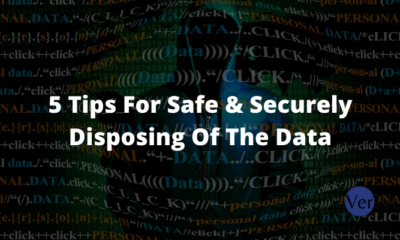Business
Essential Employee Security Awareness Training Tips: Guarding Your Business

In today’s digital era, businesses face an ever-growing array of security threats that have the potential to disrupt operations, compromise sensitive data, and damage reputation. Cyberattacks, data breaches, and insider threats are among the most common risks organizations must contend with, making it imperative for businesses to prioritize security awareness training for their employees. This training equips employees with the knowledge and skills needed to identify, respond to, and mitigate security threats effectively. In this comprehensive guide, we’ll explore key strategies and tips for implementing robust security awareness training programs that can help safeguard your business against security vulnerabilities.
Understanding the Threat Landscape
To effectively guard against security threats, business owners must first have a deep understanding of the ever-evolving threat landscape. Cybercriminals are constantly evolving their tactics, techniques, and procedures to exploit vulnerabilities and infiltrate networks. From sophisticated phishing schemes to targeted ransomware attacks, the threat landscape is diverse and multifaceted. By staying informed about emerging threats and industry trends, business owners can better anticipate potential risks and take proactive measures to mitigate them. This includes monitoring industry-specific threat intelligence sources, participating in information sharing networks, and engaging with cybersecurity experts to stay abreast of the latest developments in the threat landscape.
Identifying Vulnerabilities within the Organization
Conducting regular security assessments and audits is critical for identifying vulnerabilities within the organization. This involves evaluating both digital and physical security controls, as well as assessing employee practices and behaviors. Vulnerabilities may exist in various areas, including network infrastructure, software systems, access controls, and employee training. By conducting thorough assessments, businesses can identify weaknesses and gaps in their security posture and take proactive steps to address them. This may involve implementing additional security controls, updating policies and procedures, or providing targeted training to employees in areas where vulnerabilities are identified.
Developing Comprehensive Training Programs
Effective security awareness training programs are essential for empowering employees to recognize and respond to security threats effectively. These programs should cover a wide range of topics, including common cyber threats, phishing awareness, password hygiene, social engineering tactics, and incident response procedures. Training should be tailored to the specific needs and risk profile of the organization, with content that is relevant, engaging, and easy to understand. Interactive training modules, simulations, and real-world scenarios can help reinforce learning and ensure that employees are well-prepared to handle security threats in their day-to-day activities.
Educating Employees on Best Practices
Employees are often the first line of defense against security threats, making it essential to educate them on best practices for maintaining a secure work environment. This includes emphasizing the importance of skepticism when encountering suspicious emails or messages, as well as the significance of strong password management practices. Employees should be trained on how to recognize potential security threats and how to respond appropriately, whether it’s reporting a phishing attempt or following incident response procedures in the event of a security incident. By instilling a culture of security awareness among employees, businesses can create a workforce that is vigilant, proactive, and empowered to protect the organization against security threats.
Implementing Physical Security Measures
While much attention is often focused on digital security, physical security measures are equally important for protecting sensitive information and assets. This includes implementing access control systems, surveillance cameras, and visitor management protocols to prevent unauthorized access to sensitive areas of the workplace. Regular security patrols and audits can help identify vulnerabilities in physical security measures and ensure compliance with industry standards. Additionally, businesses should establish clear policies and procedures for handling physical security incidents, such as theft or unauthorized access, and provide training to employees on how to respond effectively.
Emphasizing Data Protection and Privacy
With the increasing prevalence of data breaches and privacy concerns, businesses must prioritize the protection of sensitive information. Employees should be educated on the importance of data protection practices, including the proper handling and storage of confidential data. This includes implementing encryption technologies, data access controls, and secure file transfer protocols to enhance data security and minimize the risk of unauthorized access or disclosure. Regular data audits and compliance assessments help ensure adherence to privacy regulations and industry standards, reducing the risk of costly data breaches and regulatory penalties.
Responding to Security Incidents
Despite the best efforts to prevent security incidents, breaches may still occur. It’s essential for businesses to have clear protocols in place for responding to security incidents effectively. This includes establishing incident response teams, defining escalation procedures, and implementing communication protocols for notifying stakeholders. Employees should be trained on how to recognize and report security incidents promptly, as well as how to follow established procedures for containment and mitigation. Conducting post-incident reviews allows businesses to identify lessons learned and make necessary adjustments to their security practices, helping to prevent future incidents and minimize their impact on the organization.
Monitoring and Adaptation
Security threats are constantly evolving, requiring businesses to stay vigilant and adaptive in their security measures. Implementing robust monitoring tools and processes enables businesses to detect and respond to security threats in real-time. Regular security assessments and penetration testing help identify vulnerabilities and assess the effectiveness of security controls. By staying abreast of emerging threats and industry best practices, businesses can continuously improve their security posture and adapt to evolving threats. Ongoing security awareness training and reinforcement ensure that employees remain vigilant and responsive to emerging security threats, helping to protect the organization against evolving risks and challenges.
Conclusion
In today’s increasingly connected world, the security of businesses is more important than ever. While investing in advanced security technologies is essential, it’s equally important to ensure that employees are well-trained and equipped to handle potential security threats. By implementing comprehensive security awareness training programs and educating employees on best practices, businesses can significantly reduce their vulnerability to cyberattacks and safeguard their sensitive data, financial stability, and reputation. By prioritizing employee security awareness training, businesses can create a culture of security awareness and resilience that strengthens their overall security posture.
-
Blog12 months ago
MyCSULB: Login to CSULB Student and Employee Portal – MyCSULB 2023
-
Android App2 years ago
Cqatest App What is It
-
Android12 months ago
What Is content://com.android.browser.home/ All About in 2023? Set Up content com android browser home
-
Software2 years ago
A Guide For Better Cybersecurity & Data Protection For Your Devices
-
Latest News2 years ago
Soap2day Similar Sites And Alternatives To Watch Free Movies
-
Android2 years ago
What is OMACP And How To Remove It? Easy Guide OMACP 2022
-
Android3 years ago
What is org.codeaurora.snapcam?
-
Business2 years ago
Know Your Business (KYB) Process – Critical Component For Partnerships



























